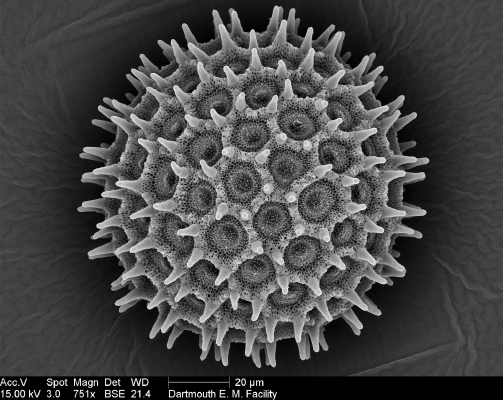Spherical Caps and the Tammes Problem
If we want to be even more precise, we must recognize that we don’t live on a plane; the earth is not flat. On a sphere, there are additional complications. The general analog to doing circle packing or circle covering on a sphere is the Tammes problem, named after a problem originally formulated in 1930 by botanist Pieter Merkus Lambertus Tammes, which originally addressed the layout of pores on grains of pollen.4 As can be seen from Exhibit 19.5, which is a grain of pollen from the Heavenly Blue morning glory flower, the layout of these pores (at least for spherical grains) is identical to packing nonoverlapping circles onto a sphere and also that of distributing points—service nodes— “evenly” on a sphere, so as to maximize the minimum distance between centers.
EXHIBIT 19.5 Heavenly Blue Morning Glory Pollen Grain, Magnified
Source: Dartmouth Electron Microscope Facility, Dartmouth College, http://remf.dartmouth.edu/pollen2/pollen_images_4/images/03%20Pollen%20MGlory-3.jpg.

Tammes also concluded that there was a ![]() effect at work (he termed it
effect at work (he termed it ![]() ), writing:
), writing:
the variation in number of places of exit was statistically traced and a typical correlation ...
Get Cloudonomics: The Business Value of Cloud Computing, + Website now with the O’Reilly learning platform.
O’Reilly members experience books, live events, courses curated by job role, and more from O’Reilly and nearly 200 top publishers.

